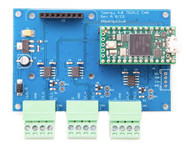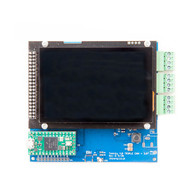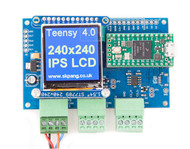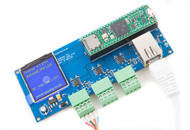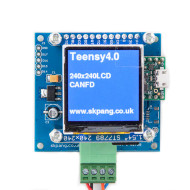Teensy 4.1 Triple CAN Bus Board With Two CAN 2.0B And One CAN FD Port With 240x240 IPS LCD
Product Description
Free Shipping Within the United States!
The Teensy 4.1 Triple CAN Bus Board with 240x240 IPS LCD is a powerful, compact development platform engineered specifically for high-performance Controller Area Network (CAN) applications. Featuring two independent Classical CAN 2.0B interfaces and one CAN FD (Flexible Data-rate) interface, this board is ideally suited for advanced development in automotive diagnostics, industrial automation, and maritime electronics.
This board is built around the Teensy 4.1, a compact, Arduino-compatible microcontroller board powered by a 600 MHz Arm Cortex-M7 processor, making it one of the fastest microcontroller platforms in its class. Despite its small footprint (approx. 18 x 36 mm), the Teensy 4.1 delivers robust performance with 1 MB of RAM, 2 MB of Flash memory, a hardware floating-point unit (FPU), cryptographic acceleration, and a real-time clock (RTC).
Whether you're developing real-time communication between electronic control units (ECUs) in a car, integrating industrial PLCs, or simulating NMEA 2000 traffic for a marine network, this board delivers the flexibility and performance needed for rigorous CAN and CAN FD application development.
Key Features:
-
Teensy 4.1 microcontroller (pre-installed)
-
Arm Cortex-M7 @ 600 MHz
-
1 MB RAM, 2 MB Flash
-
Hardware FPU and cryptographic acceleration
-
Real-Time Clock (RTC)
-
-
Triple CAN Bus Support
-
Two CAN 2.0B (Classical CAN) interfaces – perfect for backward-compatible systems
-
One CAN FD interface – supports high-speed data transfer (up to 64-byte data frames)
-
All CAN ports are terminated with 120 Ohm resistors
-
-
Power Supply & Protection
-
Onboard voltage regulator supports input from 7V to 12V DC
-
Reverse polarity protection ensures reliable field use
-
-
Visual Feedback & GUI Development
-
Integrated 1.54" 240x240 IPS TFT LCD display
-
Wide viewing angle – ideal for monitoring bus traffic or creating custom interfaces
-
Why Choose This Board?
This development board is designed for professionals and engineers who require a high-performance, low-latency embedded system for CAN Bus prototyping and diagnostics. Its seamless integration with the Arduino IDE and libraries ensures rapid development with minimal learning curve, while its triple CAN capability allows you to test and bridge multiple CAN networks simultaneously — a critical feature in modern automotive, industrial, and marine systems that often combine legacy and modern network infrastructures.
Additionally, the presence of CAN FD support opens the door to next-generation applications, such as over-the-air firmware updates, high-speed sensor data streaming, and secure vehicle communications.
Download the PDF: Teensy Software Installation & Downloading Programs (Sketches)...
TEENSY Resources
- TEENSY USB Development Board...
- TEENSY Loader to download code...
- Teensyduino, add-on for Arduino IDE...
Documents
More Resources
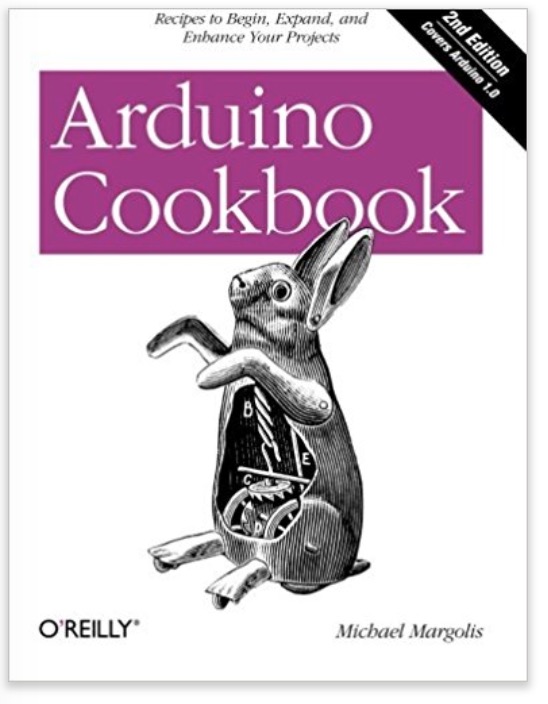 Arduino Cookbook
Arduino Cookbook
Want to create devices that interact with the physical world? This cookbook is perfect for anyone who wants to experiment with the popular Arduino microcontroller and programming environment. You will find more than 200 tips and techniques for building a variety of objects and prototypes such as toys, detectors, robots, and interactive clothing that can sense and respond to touch, sound, position, heat, and light.
You don't need experience with Arduino or programming to get started. Updated for the Arduino 1.0 release, the recipes in this second edition include practical examples and guidance to help you begin, expand, and enhance your projects right away, whether you are an artist, designer, hobbyist, student, or engineer.
- Get up to speed on the Arduino board and essential software concepts quickly
- Learn basic techniques for reading digital and analog signals
- Use Arduino with a variety of popular input devices and sensors
- Drive visual displays, generate sound, and control several types of motors
- Interact with devices that use remote controls, including TVs and appliances
- Learn techniques for handling time delays and time measurement
- Apply advanced coding and memory handling techniques
 Loading... Please wait...
Loading... Please wait...





